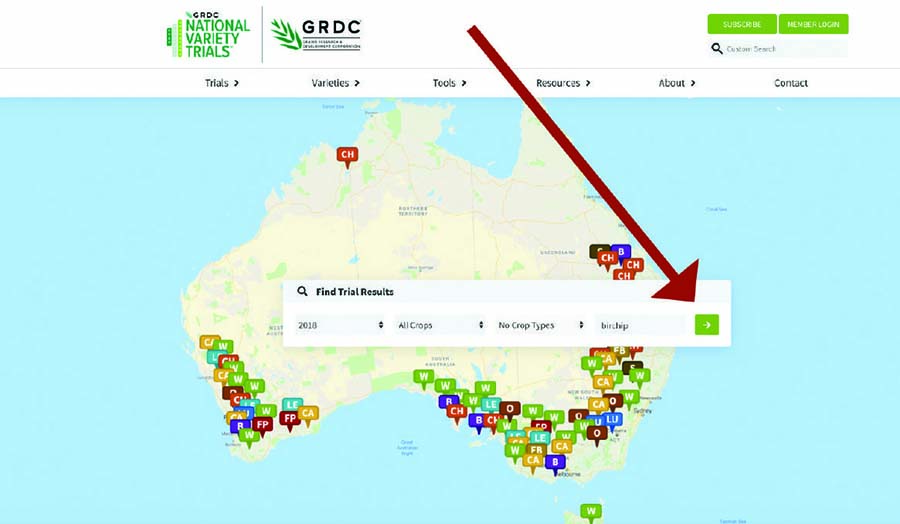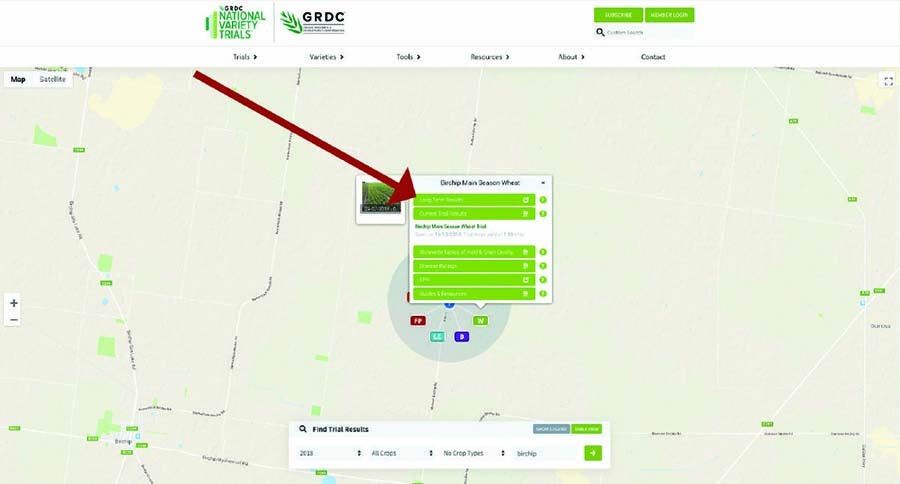When deciding whether to introduce a new variety into a farming system, growers must consider what advantages it may bring.
These may be improved yield, disease resistance, diversity or risk mitigation, or it may better meet market requirements.
To aid these considerations, growers are encouraged to access NVT Online, where they can find long-term yield results.
Here is the most robust and reliable way of selecting a variety using the NVT data, together with other related information.

Click 1 - Access database. Go to the NVT Online home page (www.nvtonline.com.au) and access data of interest to your location using the Google map tool. Select a location of interest in the Find Trial Results box, then click the green arrow. This example (pictured) is for Birchip, Victoria.

Click 2 - Select crop trial type from coloured letter icons. A marker will pop up on the map identifying several trials at a location. Click on this and it will expand to show you some coloured icons with letters indicating the crop type trials. For this example is for main-season wheat trials at Birchip, so click on the green W.

Click 3 - Select long term results. When a balloon with six options pops up, click on the Long Term Results. This will launch the Long Term Yield Reporter and take you directly to information for the Birchip location for main season wheat trials. This will appear as the comparative graph below.

This window shows you a graphical comparison of the six highest-performing varieties based on their performance at a location. Predicted yields are charted based on variation from the mean in tonnes per hectare. High predicted values could mean the variety is high-yielding and stable across environments. In the top right corner you can change the display from a line graph to a table to better compare data.
Database information
There is an immense amount of information available in the NVT database. To further support growers' varietal choice quality data, disease ratings for each species, state-based crop sowing guides and varietal descriptions should also be considered.
Growers and advisers are encouraged to jump online and investigate further.
For detailed directions on how to use the NVT Online website, watch the 'How to interpret NVT data' video below.
More information: NVT Online

























































